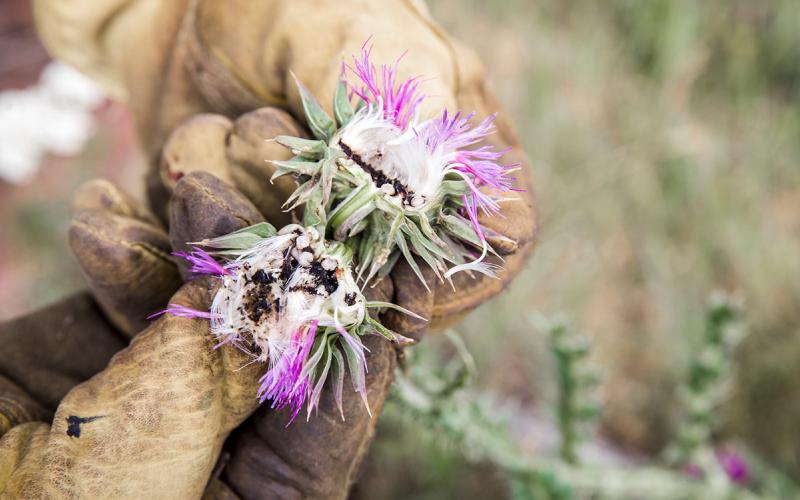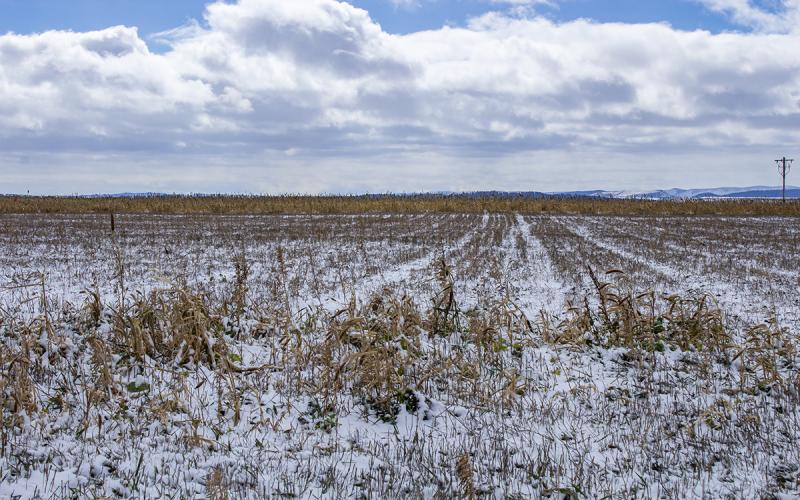
As mentioned in our previous article, the cutoff date to apply dicamba postemergence to dicamba-tolerant soybeans has passed in South Dakota. That date was last week Tuesday, June 20, 2023 The weather has delayed the planting of soybeans, and dicamba that was supposed to be applied to this year’s crop cannot be utilized, so now what?
Do not spray dicamba. While you may have purchased dicamba to use in your soybeans, applying dicamba now is illegal and can bear great repercussions if caught doing such. Applying dicamba after the cutoff date is not worth the risk when there are other viable options.
Glyphosate (commonly known as Roundup) will effectively control many weeds ( including broadleaf and grass weeds, aside from kochia and waterhemp) and dicamba-tolerant soybeans are already glyphosate-tolerant.
Protoporphyrinogen oxidase inhibiting (abbreviated as PPO-inhibiting) herbicides (including, Cobra, Ultra Blazer, Flexstar, and others) will effectively control broadleaf weeds if applied to weeds approximately 4 inches tall or less. These herbicides can safely be applied to dicamba-tolerant soybeans, but “burning” symptomology will occur after application that will likely not affect yield. PPO-inhibiting herbicide-resistant waterhemp has been confirmed in adjacent states, but not yet in South Dakota. Glyphosate can be tank mixed with these herbicides to reduce selection pressure and increase the spectrum of control. Graminicides (for example, Assure, Fulisade, Select, and others, can be tank mixed with these to increase grass weed control.
Glufosinate (commonly knowns as Liberty) will effectively control broadleaf and some grass weeds if applied to weeds approximately at 4 inches in height or less. Glufosinate can be applied only to dicamba-tolerant soybeans that are also glufosinate-tolerant (such as, Xtendflex). Glufosinate can be tank mixed with glyphosate to reduce selection pressure and increase the spectrum of control. This herbicide should not be tank mixed with graminicides, as grass weed control can be antagonized. Glufosinate activity is highly dependent on light and temperature, so be sure to apply the herbicide earlier in the day rather than later to avoid control reductions.
Bentazon (commonly knows as Basagran) will effectively control broadleaf weeds aside from waterhemp and redroot pigweed. Weeds should be treated when small (2 to 4 inches in height) and tank mixed with other herbicides to increase spectrum of control (PPO-inhibiting herbicides, glufosinate, and glyphosate can all be tank mixed with bentazon).
While acetolactate synthase inhibiting herbicides (abbreviated as ALS-inhibiting, with common products including Classic, Firstrate, Harmony, Pursuit, and Raptor to name a few) will not control most populations of kochia and waterhemp due to resistance; these herbicides can control some broadleaf and grass weeds. Refer to the label or to the latest South Dakota Pest Management Guides for tank mix, rotation and use restrictions.


